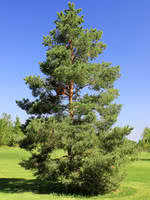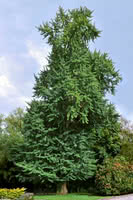Mon-Fri 9am - 5pm Mountain time
Scots Pine (Scotch Pine) vs Ginkgo Biloba
Pinus sylvestris
Ginkgo biloba
NOT AVAILABLE THIS SEASON - MIGHT RETURN
Scots Pine is a hardy, adaptable evergreen. This large tree has an oval crown and distinctively orange bark when mature. Scots Pine prefers dry to average moisture levels with very well-drained soil.
It is the most common pine tree used in shelterbelts and windbreaks. Scots Pine is also occasionally used as a Christmas tree variety.
The Ginkgo Biloba is regarded as one of the most distinctive and beautiful of all the deciduous trees, and has remained genetically unchanged for millions of years. Its beautifully fan-shaped leaves develop a clear yellow colour in fall. Graceful and attractive year-round, Ginkgo is the perfect conversation starter in your yard.
Scots Pine (Scotch Pine) Quick Facts
Ginkgo Biloba Quick Facts
Toxicity: Uncooked nuts in large quantities
In row spacing: 3 - 4 m (10 - 12 ft)

